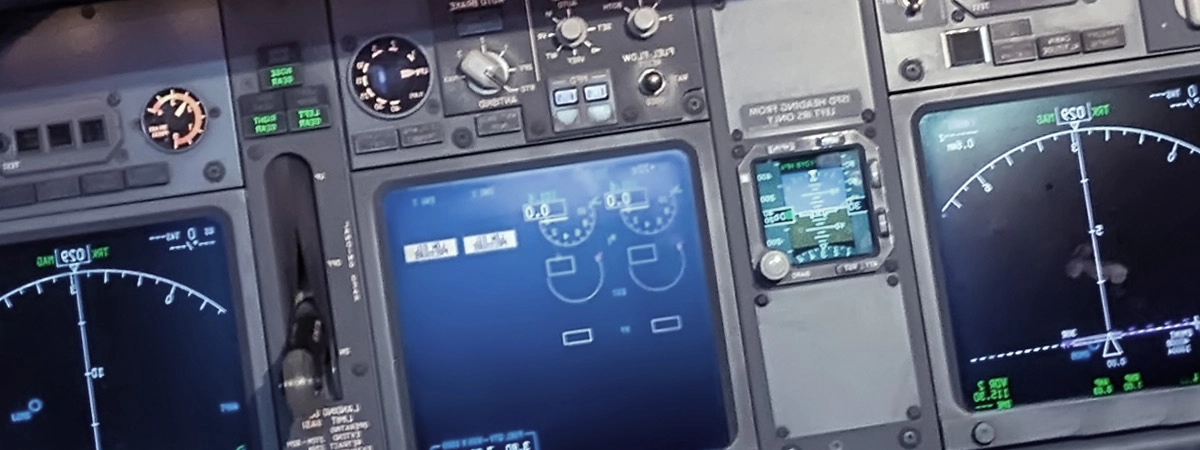IMO A.821(19) Performance Standards Testing for Navigation Displays
The International Maritime Organization (IMO) has established strict performance standards under Resolution A.821(19), which governs the design, construction, and functional characteristics of navigation displays used in ships. This standard ensures that all systems meet the highest safety requirements to prevent maritime accidents due to human error or equipment malfunctions.
The IMO A.821(19) is an essential document for shipbuilders, manufacturers, and quality managers involved in the production of electronic navigational aids like radar displays, ECDIS (Electronic Chart Display and Information System), and other visual interfaces used on board ships. Compliance with these standards is mandatory to ensure that navigation equipment operates reliably under various environmental conditions.
The testing process for IMO A.821(19) involves multiple steps, including environmental conditioning, functional testing, and human factors evaluation. Environmental tests simulate the harsh conditions encountered at sea, such as temperature variations, humidity levels, and electromagnetic interference (EMI). Functional tests check the accuracy of readings provided by the navigation displays in real-world scenarios. Human factors evaluations focus on usability aspects ensuring that operators can quickly interpret data accurately.
For effective compliance with IMO A.821(19), it is crucial to understand the specific requirements outlined within this resolution. These include but are not limited to:
- Display legibility under various lighting conditions
- Accuracy of position and heading information
- Performance in EMI environments
- User interface design for ease of use
The testing laboratory must employ advanced equipment capable of replicating these conditions accurately. Specialized chambers are used to simulate different environmental factors, while sophisticated software tools assess the performance metrics specified by IMO A.821(19). By adhering strictly to these standards during manufacturing and deployment phases, ship owners can safeguard their investments against potential risks associated with non-compliant equipment.
In summary, IMO A.821(19) sets forth critical guidelines aimed at enhancing maritime safety through stringent performance criteria for navigation displays. Adhering to this resolution not only protects lives but also contributes positively towards sustainable shipping practices by reducing accidents and incidents caused by navigational errors.
Applied Standards
The IMO A.821(19) Performance Standards Testing primarily applies to electronic navigation displays installed in commercial and passenger ships. These include systems such as radar, ECDIS, GPS receivers, chart plotters, and other similar devices that provide critical information necessary for safe maritime operations.
These standards are based on international consensus documents like ISO 11452-3 and IEC 60948, which outline best practices for visual display units in industrial environments. Additionally, EN 12678 provides supplementary guidance tailored specifically for marine applications. Compliance with these standards ensures that all navigation displays meet rigorous quality benchmarks ensuring reliability and accuracy.
The IMO A.821(19) also emphasizes the importance of human factors engineering when designing user interfaces. This includes considerations such as ergonomics, readability, and overall ease-of-use which contribute significantly towards reducing human error rates during critical decision-making processes involving navigation displays.
Scope and Methodology
The scope of IMO A.821(19) Performance Standards Testing encompasses all aspects related to the design, construction, and functionality of electronic navigational aids aboard ships. This includes both hardware components like screens, processors, and sensors as well as software applications responsible for processing sensor inputs into comprehensible outputs.
Testing methodologies typically involve a series of environmental conditioning tests designed to replicate real-world conditions experienced by navigation displays at sea. These may include temperature cycling from freezing temperatures (-20°C) up to scorching heat (50°C), exposure to salt spray, immersion in water for varying durations, and vibration testing to simulate rough seas.
Functional performance assessments are conducted using standardized procedures prescribed by the IMO resolution itself along with supplementary guidelines provided by relevant international standards organizations mentioned earlier. Key parameters measured include accuracy of positional data, readability under different lighting conditions, response time when switching between modes or zooming in/out on maps/charts, and overall system stability during prolonged usage.
Human factors evaluations form another important component of the testing process. They focus on aspects such as user interface design, clarity of information presented to operators, ease-of-use, and potential distractions that might affect decision-making abilities. By incorporating feedback from experienced mariners involved in prototype trials, manufacturers can refine their products further towards achieving optimal performance levels.
Use Cases and Application Examples
- Radar Display Testing: Ensuring accurate representation of vessels within a 360-degree field-of-view while maintaining sharpness even under adverse weather conditions. This is crucial for detecting approaching ships early enough to avoid collisions.
- ECDIS Performance Evaluation: Verifying that electronic charts display correctly and update seamlessly in real-time, providing accurate information about the ship's position relative to navigational hazards.
- GPS Receiver Calibration: Guaranteeing precise location coordinates are consistently reported regardless of satellite availability or atmospheric interference.
- Chart Plotter Usability: Assessing how effectively different chart formats can be manipulated on screen, including zoom functions and layer management capabilities which help mariners plan routes efficiently.
In addition to these specific use cases, there are broader applications where IMO A.821(19) testing plays a vital role:
- Ship Design Optimization: By identifying weak points early in the development cycle, manufacturers can enhance product features and reduce failure rates.
- Crew Training Simulation: Realistic scenarios generated via high-fidelity simulations enable crew members to practice emergency maneuvers confidently before deployment.
- Regulatory Compliance Verification: Demonstrating adherence to international regulations helps build trust among stakeholders ensuring safe operations worldwide.
These examples illustrate just how integral IMO A.821(19) testing is for maintaining the highest standards of maritime safety and efficiency.





